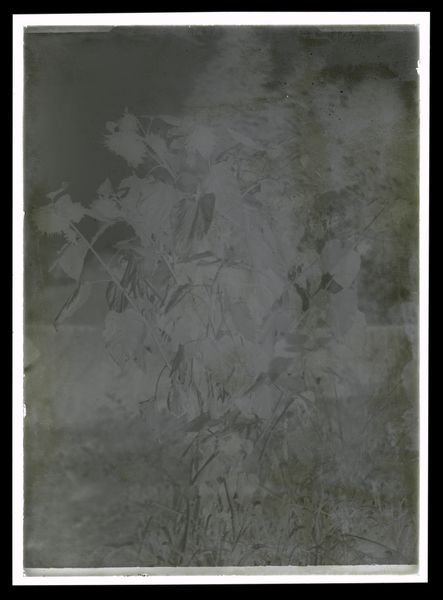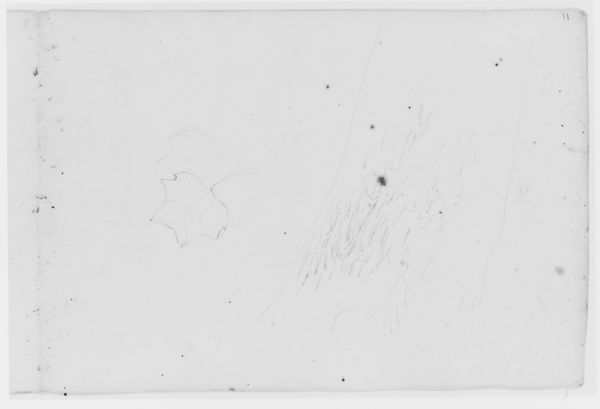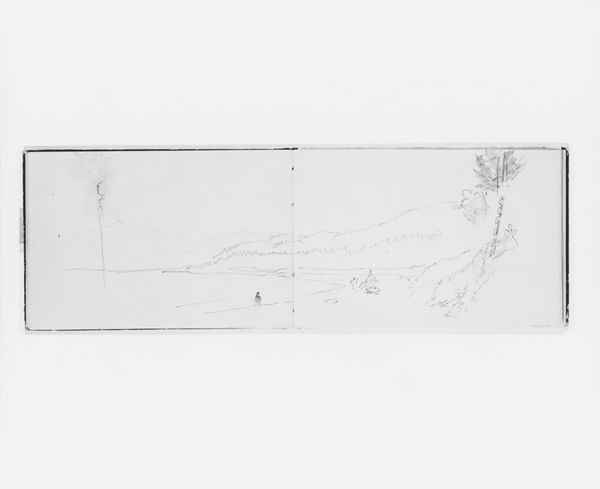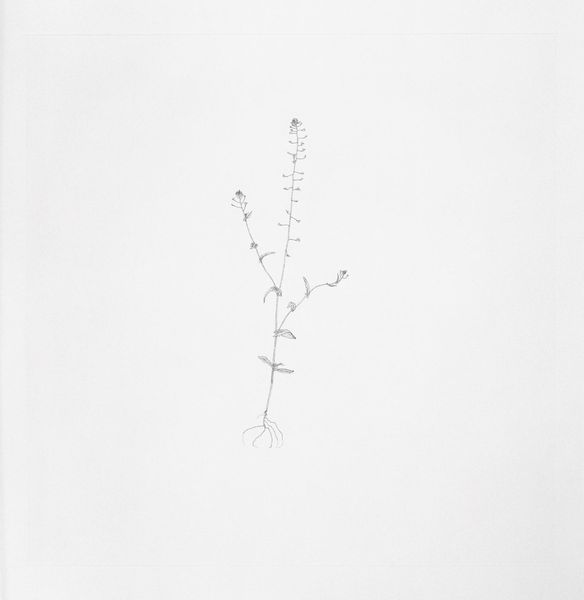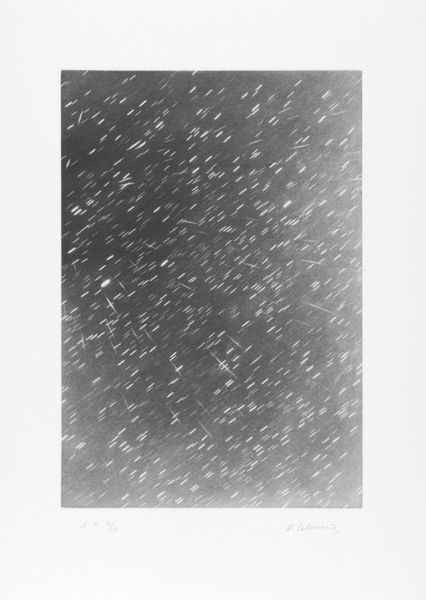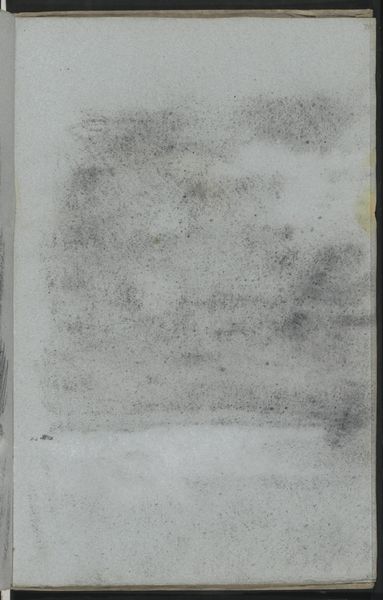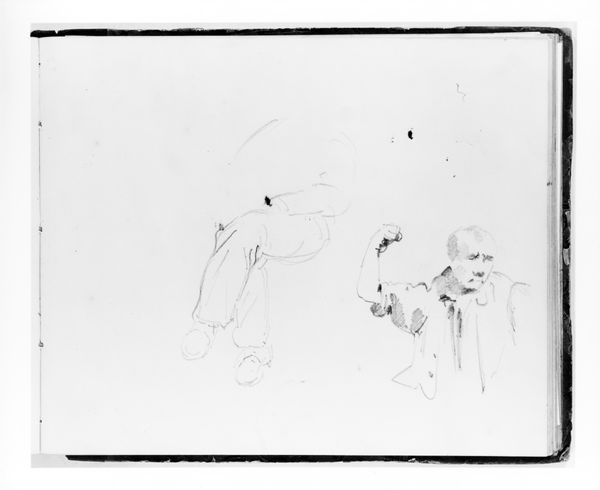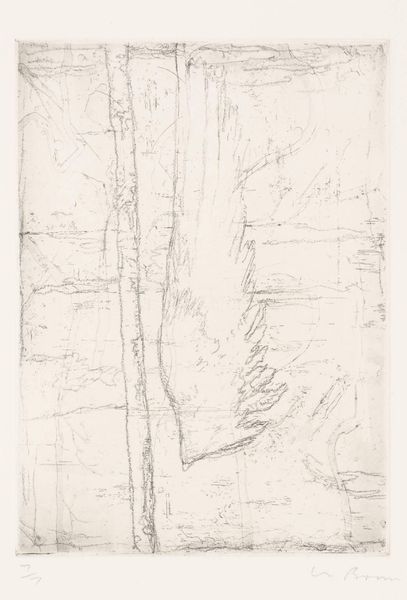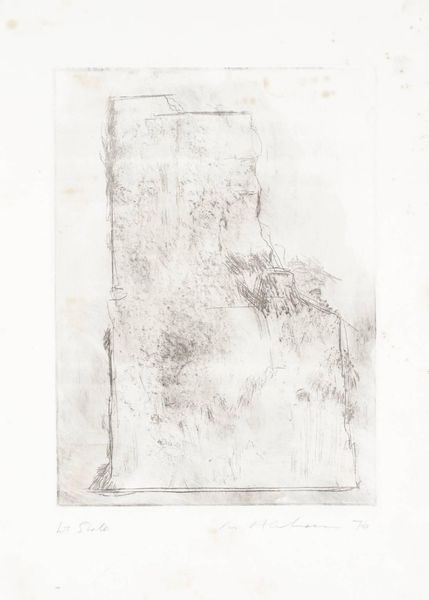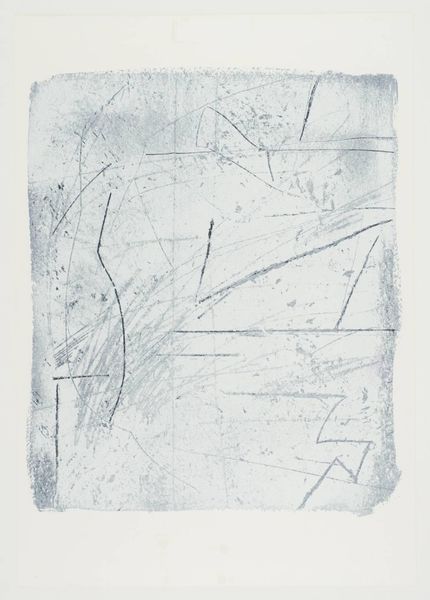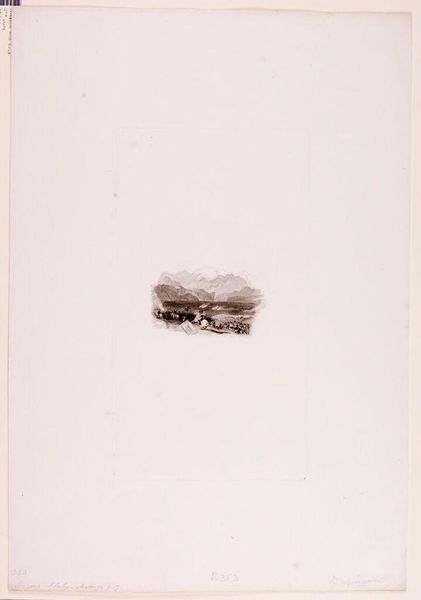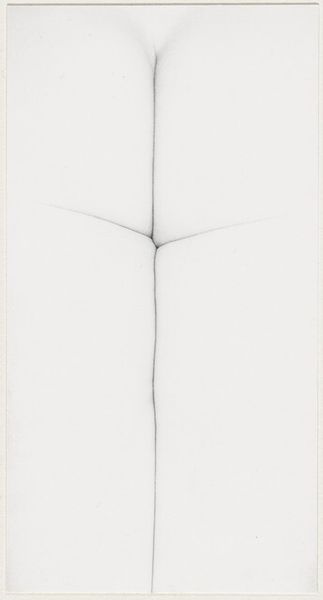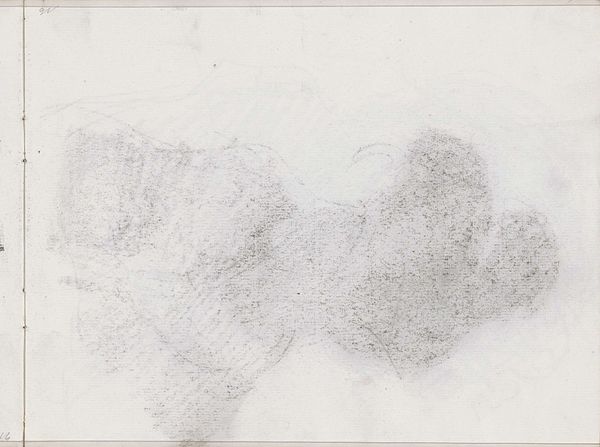
drawing, pencil
#
drawing
#
landscape
#
pencil
#
realism
Dimensions: 8 1/16 × 11 in. (20.5 × 27.9 cm)
Copyright: Public Domain
Editor: So, we're looking at John Quincy Adams Ward's "Landscape Study (from Sketchbook)," made between 1857 and 1860, using pencil. It's deceptively simple, almost stark in its composition. What formal qualities jump out at you? Curator: Initially, I am struck by the work's extreme economy of line. The composition rests upon the delicate rendering of form using minimal, yet deliberate strokes. Notice the contrast: vast expanse of untouched space with that tight clustering of marks describing the foliage. It presents an interesting figure-ground relationship, wouldn't you agree? Editor: Yes, it’s like a whisper in a void! But is that tension deliberate, or is this simply an unfinished sketch, an initial idea not fully worked out? Curator: That is the crucial ambiguity that drives its aesthetic power. Is the work "unfinished," or does it represent a fully realized exploration of restraint? Consider the quality of the line itself – how it varies in weight, creating subtle shifts in perceived depth despite its limited range. Editor: So the incompleteness *is* the point? A study in suggestion rather than definition? I hadn’t considered that! Curator: Precisely. It's a masterful exploitation of what is *not* there, inviting the viewer to actively complete the image. That careful arrangement of sparse detail implies spatial depth using light and shadow alone, reducing nature to pure, elemental forms. Editor: It's much more than a simple sketch then, a carefully considered piece of art with unique construction! I will never look at landscape drawings the same way. Curator: I’m glad to have been of service. This artwork compels us to see value even in artistic reduction, thus presenting fresh perceptual possibilities.
Comments
No comments
Be the first to comment and join the conversation on the ultimate creative platform.

